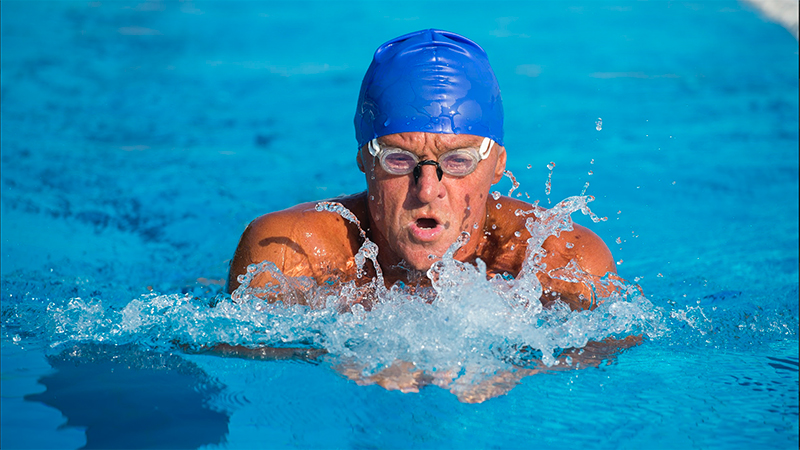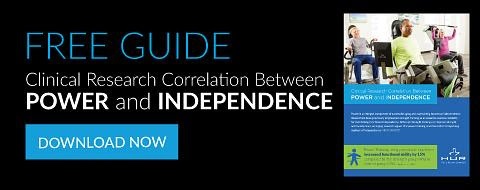This is Part 3 in a three-part series about Power Training. In Part 1, we ask the question, what exactly IS Power Training? And, why is it a particularly important concept for wellness professionals working with the senior population?
In Part 2, we dove into how wellness professionals can assess the degree to which a client might need power training and how to create a program in which clients can optimally train for maximum power gains.
In the third and final part of this series we’ll dive into specific exercises and equipment that maximizes the development of power while minimizing the dangers and inefficiencies of traditional high-speed strength training.
Power Training Methods for Older Adults
One of the biggest problems with high-speed strength training, particularly for older adults, is inertia.
On traditional weight machines, once the weight begins to move against gravity, depending on its mass, it will develop a certain momentum. After all, once any object starts moving in any direction, it wants to keep moving in that direction.
When performing any exercise that involves the movement of weight, there is a bimodal curve – a large weight increase before it drops off, then another smaller weight increase before it drops off again.
When moving at high speeds, the weight moves away from the body slightly, before coming back. In other words, we don’t have full power overload through the entire range of motion.
But the biggest problem with inertia and older adults is that joint injury can happen as a result of deceleration before the end range of motion.
So, how do we deal with the problem of inertia? Ideally, we utilize training techniques and equipment that minimizes the problem. Here are four ways to do that.
#1. Pneumatic Strength Training Machines
We know that resistance training is an excellent way to counteract age-related loss of muscle mass, improve strength, and convert fat to muscle. Resistance training has a significant positive impact on our ability to perform the many daily activities that allow us to live an active, healthy, injury-free life. This is true whether you begin resistance training at the age of 40 or the age of 80. But…
Not all resistance training machines are created equal. Traditional machines rely on stacks of weights and a system of wires and pulleys to create resistance. In contrast, pneumatic resistance machines use an air compressor to create a controlled amount of resistance that can be easily adjusted by the user. Users lift against that resistance, eliminating the need for actual weights.
In most cases pneumatic resistance machines are safer and more effective for users of all ages - but especially for older adults and those recovering from an injury.
Why? Because Pneumatic Resistance Limits Inertia
Limiting inertia means that the user won’t swing backwards or forwards while moving through an exercise. This allows the user to move smoothly through an exercise, without joint strain or jerky movements that can cause pain or injury.
The motion in pneumatic machines is the closest we can get to true isotonic exercise. Isotonic exercise is when a muscle is contracting against a constant load– a task that’s impossible to do with will power and muscle control alone. Pneumatic machines control the movement and the resistance for the user, making isotonic exercise possible.
Moving a stack of weights might appear to accomplish the same thing, but inertia, acceleration, and friction can cause the amount of force on the body to change throughout the movement. On many machines, if you push the weight quickly through the first half of the move, momentum will cause the weights to become much lighter during the second half of the motion.
With pneumatic equipment, the resistance stays the same – no matter how quickly you move through an exercise.
#2. Resistance Bands
Resistance bands use elastic tension rather than mass to provide resistance and therefore decelerate the limb as it approaches end range of motion. They are lightweight, easy to carry, and inexpensive.
But, one of the best things about resistance bands is the variety of exercises that can be performed with them. It is possible to work every major muscle group with resistance bands, completing a full-body workout. Resistance bands also allow the user to adjust the intensity level, moving between light, medium and heavy resistance as necessary to their training plan.
In many cases, resistance band exercises should be incorporated into a comprehensive training plan that includes pneumatic strength training machines and cardio workouts. As we’ll discuss later, exercises using resistance bands are an excellent way to taper workouts and encourage recovery in periodized training plans designed to maximize power.
When alternated with high-intensity resistance training, resistance bands can continue training for strength, endurance, flexibility and balance, while giving muscles the break they need to recover.
#3. Aquatic Resistance Training
One of the best places to train power is in the water, especially for seniors dealing with arthritis, joint pain, or who are recovering from an injury.
In aquatic resistance training, the drag forces produced by the water buffer the amount of force while exponentially increasing resistance as you move faster and faster.
In water, as the velocity increases, the amount of drag rises exponentially. In other words, the faster you move in the water, the more drag the water gives you, making it an extremely effective medium for power training.
In addition to being a safe way to increase bone density and muscle mass, water exercises can even provide some relief from arthritis and joint pain because it puts less stress on the joints and the buoyancy of the water helps reduce the pressure on joints. Because water acts as a form of resistance, strength exercises can be performed in the water without heavy weights.
#4. Functional Training
Functional training is a multi-directional game that gives us the opportunity to train for the activities of daily living. As such, it’s an essential part of any power training plan.
Imagine, if you will, that you are the coach for a football team. You spend hours and hours in the gym with your team, strength training and conditioning until you have a team of the strongest, fittest players in the game. BUT, you never get them out on the field to teach them HOW to play football. In this scenario, the power gains in the gym don’t automatically translate into the functional aspects of actually playing football.
That’s what a power training plan without functional training is. In order for power training to be effective, power and strength gains must be translated into multi-directional movements using multiple joints that mimic the movements we use in everyday life.
Training that’s focused on building strength and power is generally focused on training individual muscle groups. For example, you might do one exercise that isolates and builds strength in the biceps. Then, you might move on to an exercise focused on building strength in the quads or hamstrings, and so on and so forth.
Functional training is focused on movement patterns– things like pushing or pulling, walking, stepping, bending and lifting. This is important because most normal daily movements don’t require only one muscle group at a time. They also don’t happen only in one plane of motion. Daily life requires forward and backward movement, pushing up and pulling down, bending over and standing up, etc.
Functional training is about building strength and mobility through exercises that use movements similar to those required in our day to day life and it’s an essential part of any power training plan.
Periodization of Training
Training calendars are used all the time with athletes to ensure that high-intensity training is balanced with recovery, but they sometimes ignored within the general population. And yet, this pattern of intense training, tapering, and recovery is essential to training for power.
But, what is the optimal length for a training cycle that is designed to maximize power?
Most research shows that if you constantly increasing training intensity, you will reach a plateau within 4 weeks. However, when recovery is allowed to happen, further increases in weight and intensity create greater increases in power. So, this pattern of increased intensity and recovery is essential to progressive gains.
How to Assess Power with HUR SmartTouch
The latest update in HUR SmartTouch technology allows for accurate, targeted pre and post-assessments of an individual’s level of power. The user interface on the HUR SmartTouch Hi5 displays vertical bars which demonstrate the peak power of each repetition of a particular exercise, while a horizontal line represents the power target. The technology automatically updates the power target based on recorded information from previous training sessions.
Trainers and fitness professionals can use HUR SmartTouch Hi5 to ensure clients are moving through each training session safely and with targeted effectiveness that will build muscle strength and increase power. All users have to do is identify and select the exercise they want to perform on the touchscreen and their personal power target will automatically display and track their progress.








